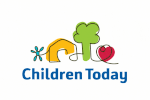|
The preschoolers at Play House North really love to cook. In the past they've made vegetable soup, oatmeal raisin bars, homemade peanut butter, and watermelon agua fresca. Cooking, and food preparation activities in general, are wonderful ways to engage children across many areas of development. Self & Social Development: By working on a project together, children can practice impulse control, how to take turns, and how to negotiate space and materials. Language & Literacy Development By using recipes, children are learning to follow increasingly complex instructions. Recipe and process discussions also promote new words and terminology. Cognitive Development Recipe analysis helps them learn cause and effect and helps them engage in critical thinking. Mathematical Development Using the right amount of each ingredient helps them practice measuring skills. Physical Development
Chopping, pouring, and stirring helps them with their fine motor skills. 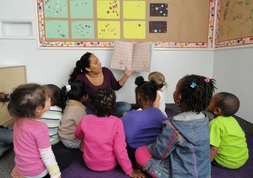 Teacher Alexis with a rapt audience. Teacher Alexis with a rapt audience. By Elia Rocha, Alexis Vazquez, and Rachel Moore There can be few greater joys for a parent or a teacher than introducing young children to the wonder of books. Books, after all, contain the whole world. They can take children on magical trips of discovery, they can inspire in them a love of language, they can help them learn to express their emotions. They come in an infinite variety and are always ready to share their treasures. At our Play House programs, we take special care to select books that are not only great to read and fun to listen to, but that also speak to the unique experiences of the children we care for. It's so important that they see themselves - their culture, their struggles, their history - reflected in the pages. Crucially, these books can also provide the words our kids need to share what they're feeling inside. We asked two of our preschool teachers, Rachel Moore and Alexis Vazquez, to look through our libraries and pick some favorites. Here's what they chose. 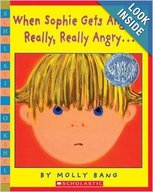 When Sophie Gets Angry - Really, Really Angry... By Molly Bang Play House West teacher Rachel Moore selected this book. Rachel writes: "This book explores what happens when Sophie gets really angry. It talks about how she is feeling in descriptive language; for example, 'She roars a red, red, roar', and 'Sophie is a volcano, ready to explode.' It also shows how Sophie deals with these big feelings. First Sophie runs and runs, then she cries for a while. When she is done crying, she listens to the wind and the animals around her and comforts herself." "This book is very relevant to our children because Sophie experiences a big emotion that they also experience. The book teaches that this big feeling is natural and it also shows how she copes. The ways in which Sophie experiences her anger are nonviolent and involve self-soothing; an important skill for our children to learn." 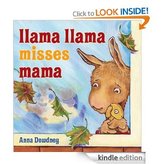 Llama Llama Misses Mama By Anna Dewdney Play House North teacher Alexis Vazquez chose this book. Alexis writes: "This is a story about a little llama on the first day of school and the sadness and loneliness he feels when his mom drops him off. The little llama is sad and lonely until a teacher reminds him that this mother will be back. He starts to make new friends, and when his mom comes to pick him up he is excited to tell her all about his day." "This book helps children talk about missing their parents when they are dropped off at school; about the separation anxiety they might feel. We use this book to help some of our children transition into the classroom and to help them put words to what they might be feeling." 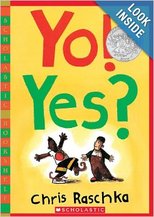 Yo! Yes? By Chris Raschka Rachel writes: "This simple book illustrates two children meeting. Using only one-to-two word phrases they greet each other, talk about their feelings, and become friends. Although the two boys are very different, they form a bond together." "I think this book is fascinating to our children because it shows them how a friendship can be developed using only a few words. It teaches pro-social skills with a minimum of language, which is great for our children, who may sometimes struggle to make new friends. It showcases how they might form bonds with their classmates." 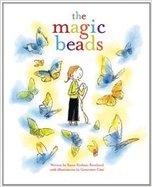 The Magic Beads By Susin Nielsen-Fernlund Alexis writes: "This book is about a little girl who moves into a shelter with her mother, leaving behind most of her possessions. At her new school she learns that she'll have to bring something in for Show & Tell at the end of the week. She gets more and more nervous, worrying that she'll have nothing to share with her class. By talking to her mother, she realizes that she does have something to share - her magic beads. They're ordinary beads by themselves, but with her imagination, they can take her anywhere." "So many of our kids have had similar experiences, losing their toys and clothes - sometimes all of their possessions - when moving to a shelter. This book helps our children talk about how it feels to leave what they had behind. It also helps them share their shelter experiences with other children in the classroom." 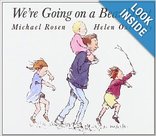 We're Going on a Bear Hunt By Michael Rosen & Helen Oxenbury Rachel writes: This story follows a family as they set off on an adventure to find a bear. The words can be sung and the children can use hand motions and sound effects as they read along with the teacher." "The beauty of this book is that it allows children to get lost in the narrative by using their whole bodies and their imagination. While it doesn't necessarily speak to our children's unique situations, I believe it is therapeutic because it allows them to sing, move, and be creative. They can experience the simple pleasures of this children's classic." 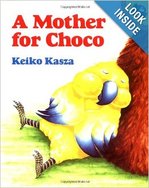 A Mother for Choco By Keiko Kasza Alexis writes: "This book is about a yellow bird named Choco, who doesn't have a mother. He goes in search of one and every animal he meets points out the physical differences between them and tells him they can't be his mother. Choco begins to cry. A bear who sees him crying as she's walking by decides to become his mother, despite their different physical appearances." "This book illustrates the diversity in families in a way that is simple for children to understand. It helps them realize that families come in all shapes and sizes." 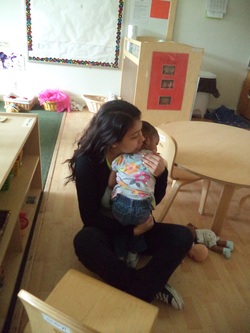 By Cheryl Ichikawa I grew up in a time when discipline was not about communication and respect. It was about doing what I was told. Consequences always entailed losing certain privileges, and often included physical punishment. Fear was considered a deterrent. But what did I learn? When I became a parent and had to decide how to discipline my children, it was not easy because many of my friends and family still subscribed to the same patterns of generations before them. However, what I learned growing up was that fear does not just deter you from doing the wrong things, but the right things as well. For me to try new things, venture beyond the familiar and safe, or to allow myself to do something with the possibility of getting it wrong… fear stopped me every time. I decided that I wanted my children to grow up, not in fear of what could happen, but with an understanding of why things do happen. I wanted them to be able to take risks (calculated risks) that allowed them to see beyond what is and venture into what could be. Therefore, my children needed to understand that making mistakes is the first step to learning something new. And so, I decided to discipline my children with respect and communication instead of threats, reprimands and physical punishment. Non-violent caregiving nurtures children’s belief in themselves and gives them the courage to seek new adventures and build upon what they know to be true. Instead of fear, children and caregivers create a dynamic of trust, communication and support. Children are results-oriented. Therefore, if caregivers can provide children with non-confrontational ways of interacting with peers or verbal alternatives for getting their needs met, they can decide to act accordingly. However, the burden of consistency and control is on us. We must decide how we handle situations - our volume, tone of voice, physicality, and the words we use. All these things matter and have an effect on all the children in the environment. Young children learn by example. Therefore, it is the caregiver’s responsibility to always act accordingly. Inconsistency is confusing and creates stress for children. Have you ever watched a child in the process of learning something new? They will do the same thing over and over and over again, often with a smile on their face. This is learning. Discipline needs to be administered the same way. We must have consistency in our responses to negative behavior. We must use few choice words, a soft voice, a gentle touch and we need to come down to their physical level (kneeling or squatting). By doing this, we show respect for the child and what is happening in the moment. By acknowledging what is happening in the moment, we show the child that we are watching. By offering the child help or another alternative, we help the child to understand that there are different choices he or she can make next time. Watching a child experience life is a beautiful thing. They see new things without filters, past experiences or fear. As caregivers (teachers, parents, adults) we must work daily to protect the innocence of our children and allow them to just be in the moment… to learn on their own terms, in their own time, and in their own way. By Dora Jacildo Children Today was established by founders who believed that every child was deserving of an early childhood grounded in respect. They knew that children would excel if they were given an environment where they could feel emotionally and physically safe. Our staff spends most of their time providing this experience for the children in our care with empathy, respect, compassion and a thorough understanding of child development as the foundations for the work we do in our classrooms and in our offices. Non-violent care-giving means being very intentional about our interactions with children, about the materials and equipment in the classroom, and about our connections with one another. It means eliminating bias and judgment and embracing the idea that every child is doing the best they can with the skills they have. Our focus is on sharing power, teaching problem solving skills, engaging in critical thinking and ensuring that our time spent with children is never punitive and always supportive. However, in order for our philosophy to be successfully implemented, we must ensure that our parents are also cared for with the goals of emotional and physical safety in mind. For many of our families, violence has been a part of their daily lives. Their relationships have not been respectful and their communities have not been safe. Many arrive at our centers feeling very guarded, expecting that we too will hurt them in some way if they let us in. But because the philosophy works so well, in time families come to realize the fundamental importance of a relationship like this and it serves as an example for how they can connect with their children.
Non-violent caregiving benefits all children, but it is absolutely life changing for a family experiencing homelessness. |
AuthorVarious members of the Children Today staff contribute to these blog posts. Archives
July 2024
Categories |
